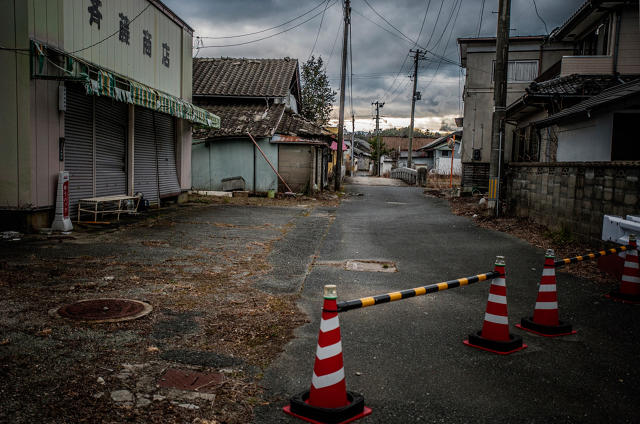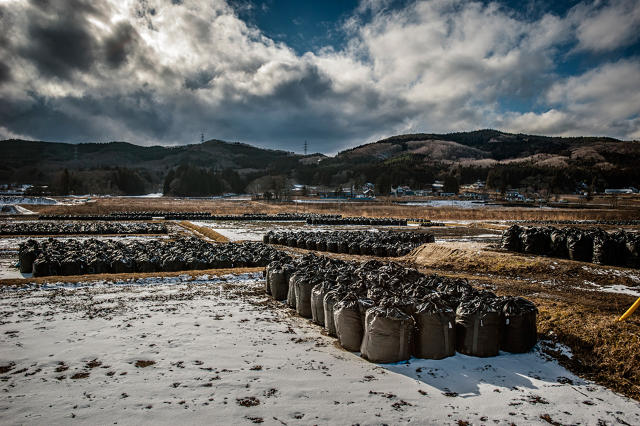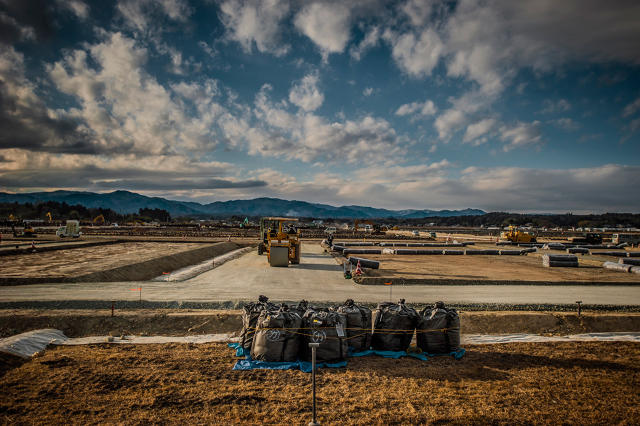look at The millions of luggage Of Radioactive dust That Japan Has No Plan For
5 years after the meltdowns at the Fukushima Daiichi nuclear plant, Japan nonetheless faces every other four many years or more of cleanup. one in every of many problems is what to do with the huge amount of contaminated soil from the website—which is now in a growing pile of bags stacked on former farms in Fukushima.
a new photo sequence from Japan-primarily based photographer James Whitlow Delano paperwork the sprawl of nuclear waste.
As of 2015, the federal government said that there have been greater than 9 million bags within the prefecture. a few of it will be moved within the no-entry zone subsequent to the nuclear plant, which is so radioactive that the federal government has given up on decontamination for the second. however Japan is also sending radioactive waste to other elements of the country.

“the japanese govt made up our minds early on in the decontamination process that all prefectures in Japan should share the burden of storing radioactive waste with Fukushima Prefecture,” says Delano, who has been photographing the catastrophe because it took place in 2011. “This resulted in agency pushback by communities in other prefectures which can be adjoining to web sites that have been selected.”
they have got cause to be involved: In September of 2015, when there have been floods in Nikko, Japan, tons of of bags of radioactive soil were washed into the local river.
Even in Fukushima itself, in villages where many residents would possibly not have the ability to return for a decade or extra, no one wants a radioactive dump next to their former houses. The dumps are imagined to be temporary and moved in 30 years, but people are skeptical to be able to occur. “They really feel like the presence of the website will likely be just like the final nail in the coffin for their communities,” he says. “So, nobody wants this contaminated soil.”

In some areas, a number of folks have began transferring again. “after I used to sneak within the previous 20-kilometer-radius nuclear no-entry zone, i’d enter a neighborhood in Minami Soma that used to be half throughout the zone and half outdoor and hop the barrier to document the absence of humanity,” says Delano. “About one and a half of years after the earthquake and tsunami, the no-entry zone used to be readjusted to reflect the true radiation levels, instead of being an arbitrary 20-kilometer radius. That intended that the entire local could be decontaminated and ready for families to come, in the event that they needed to take action.”
Some resident lower back, but now the fields subsequent to the nearby are being cleared for a dump full of baggage of contaminated soil. “folks fear the presence of this soil and the dust that every breeze will raise into their neighbor,” he says. “It creates fear and doubt. Many families, particularly those with small children, are usually not returning to this area of Fukushima Prefecture.”

Delano used to be reluctant to spend a lot time within the space himself, and carried a Geiger counter and wore a masks while he worked. “I all the time do my work and get out,” he says. “for instance, one scorching spot i found in 2012 would expose you to the equivalent of an additional year of pure radiation publicity within 24 hours, for those who have been to take a seat there. For evident causes, i did not linger there.”
For him, the disaster used to be non-public—he is lived in Japan for 20 years and has eastern family. Even in Tokyo, the food supply has been affected, and meals are now labeled with the prefecture the place they were grown. “that you could watch out, however once you go to a cafe or purchase a bento box lunch, all bets are off,” he says.
He also wished to show how a lot the area—which was once once a peaceable, Vermont-like area of farms—has changed. “it’s one of the most most pretty u . s . a . in Japan,” he says. “This pure magnificence only reinforces the sense of loss.”
All photos: James Whitlow Delano
<img alt="
a new photo collection from Japan-based photographer James Whitlow Delano documents the sprawl of nuclear waste after the 2011 Fukushima catastrophe.
” src=”http://a.fastcompany.net/multisite_files/fastcompany/imagecache/slideshow_large/slideshow/2016/03/3058303-slide-i-s-6-japan-doesnt-know-what-to-do-with-hundreds of thousands-of-luggage.jpg”>
<img alt="
one among many issues is what to do with the large amount of contaminated soil from the web page.
” src=”http://b.fastcompany.net/multisite_files/fastcompany/imagecache/slideshow_large/slideshow/2016/03/3058303-slide-i-s-5-japan-doesnt-know-what-to-do-with-tens of millions-of-baggage.jpg”>
<img alt="
it is now in a growing pile of luggage stacked on former farms in Fukushima.
” src=”http://a.fastcompany.web/multisite_files/fastcompany/imagecache/slideshow_large/slideshow/2016/03/3058303-slide-i-s-2-japan-doesnt-comprehend-what-to-do-with-tens of millions-of-baggage.jpg”>
<img alt="
As of 2015, the government mentioned that there have been greater than 9 million luggage within the prefecture.
” src=”http://b.fastcompany.web/multisite_files/fastcompany/imagecache/slideshow_large/slideshow/2016/03/3058303-slide-i-s-1-japan-doesnt-understand-what-to-do-with-hundreds of thousands-of-bags.jpg”>
<img alt="
a few of it’ll be moved throughout the no-entry zone next to the nuclear plant.
” src=”http://c.fastcompany.web/multisite_files/fastcompany/imagecache/slideshow_large/slideshow/2016/03/3058303-slide-i-s-four-japan-doesnt-recognize-what-to-do-with-millions-of-bags.jpg”>
<img alt="
but Japan can also be sending radioactive waste to different components of the united states of america.
” src=”http://d.fastcompany.web/multisite_files/fastcompany/imagecache/slideshow_large/slideshow/2016/03/3058303-slide-i-s-3-japan-doesnt-know-what-to-do-with-millions-of-baggage.jpg”>
<img alt="
there’s reason to be concerned: In September of 2015, when there have been floods in Nikko, Japan, a whole bunch of luggage of radioactive soil have been washed into the native river.
” src=”http://d.fastcompany.web/multisite_files/fastcompany/imagecache/slideshow_large/slideshow/2016/03/3058303-slide-i-s-7-japan-doesnt-comprehend-what-to-do-with-thousands and thousands-of-luggage.jpg”>
<img alt="
Even in Fukushima, in villages the place many residents won’t be capable of return for a decade or more, nobody desires to are living next to radioactive dump.
” src=”http://c.fastcompany.web/multisite_files/fastcompany/imagecache/slideshow_large/slideshow/2016/03/3058303-slide-i-s-8-japan-doesnt-know-what-to-do-with-thousands and thousands-of-bags.jpg”>
(31)










